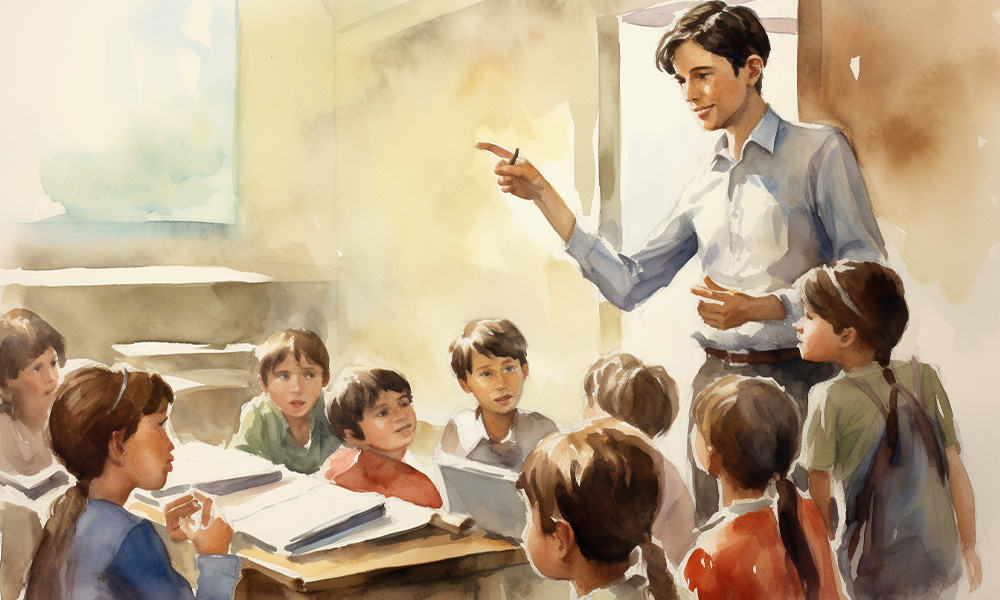A little over a decade ago, my wife and I were driving on a terrible dirt road in the mountains behind Playa Potrero in Guanacaste. We were in one of our terrible, used SUVs that one comes to suffer through over the years in these parts, and the topic of having kids came up. We had blown up our lives a few years earlier and everything still felt new, adventurous, and difficult. We both literally laughed at the idea of having kids in Costa Rica. How would that even work? What a stupid idea!
A year later our first son was born in San Jose, soon to be followed by a second little boy. After a few years of pack and plays, diapers, and naked babies on the beach, it was time to start thinking about school. Our stretch of coast in Guanacaste had several educational options both public and private.
It just so happened that one of the handful of side jobs I was able to wrangle when we first arrived in the country was a classroom aide for a nice little girl in a local school called La Paz Community School. Since we had some familiarity with the school and liked the people and the vibe, that’s where we decided to send the kids.
Before La Paz, if you would have asked me about my personal educational experience growing up in New Jersey and Pennsylvania I would have said it was fine. There were some excellent teachers and then there were some that were, let’s say, lacking. The facilities were what you’d expect, big brick buildings.
The type of instruction was what I thought all schooling was based on, the sit in your chair inside all day and pay attention. The education that my boys are getting couldn’t be more different.
Facilities – You’re Allowed Outside!
As mentioned above, my schools had all of the same facilities. They were big brick boxes with some designated outdoors area where I always pined to go but was infrequently allowed to visit. My kids’ school couldn’t be more different. First, it’s at the base of a tropical mountain, which is a sight to behold until you’ve lived in Costa Rica long enough to become somewhat jaded to natural beauty.
Second, the kids are not only allowed to be outside, they spend a large percentage of the school day traversing gardens teeming with hummingbirds to get from classroom to classroom, playing in the soccer field or playgrounds, swimming in the pool, or taking a few moments to relax in one of the hammocks strung up between pillars in the outdoor hallways. Some of their classes are held outside as well, learning to grow food, raise chickens and bees, and compost their food waste from lunch.
Uniforms
I remember in fourth grade the principal came into our class to chat about something or other, and we had some time to ask the big man himself whatever we wanted about the school. The most pressing item that needed to be addressed was that there was a rumor circulating that we were going to have to start wearing school uniforms, and we wanted him to know we were staunchly opposed.
In Costa Rica, every single school (both public and private) requires uniforms. To the utter dismay of 4th grade me, old man me loves it. Due to some kind of unexpected twist of fate, I have become the person responsible for washing the kids’clothes and knowing that I’m only required to wash a handful of shorts and little collared shirts makes my life much easier.
Bilingual
One of the most obvious differences between my own education and that of my boys’ is that, starting in preschool, their school is bilingual. I can’t keep track of which subject is taught in which language in which grade but in general, half the day is in English and the other half is en Español.
In contrast, I only received two years of foreign language education, but not until high school, and as Madame Pfendler could attest, I didn’t walk away speaking a second language.
Big Kids like Little Kids?
Upon arriving in Costa Rica, my wife was hired as the director of an education-based nonprofit and while assisting her with a million little kids, something quickly stood out to me that was different from what I was used to. The older kids interacted with, took care of, and generally loved the little kids.
When I was young, my cohort of friends and I were way too cool and mature to hang out with little kids and older kids were to be regarded with awe and fear. When I pick up my older son from soccer practice, kids of all ages are shouting goodbye to him in both languages.
I attended some sort of adorable presentation in my younger son’s classroom recently and was introduced to his ‘big buddy’, a polite older kid who promptly gave him a high five and helped him reach the monkey bars.
How do all of these differences affect the education that my kids are getting? I guess time will tell. I can tell you how they have influenced how they feel about their school, both boys will tell you how much the love it. In two languages.
About the Author
Vincent Losasso, founder of Guanacaste Wildlife Monitoring, is a biologist who works with camera traps throughout Costa Rica. Learn more about his projects on facebook or instagram. You can also email him at: vincent@guanacastewildlifemonitoring.com






